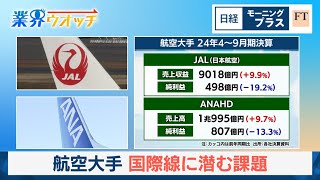TOKYO, Nov 28 (News On Japan) –
Japan’s airline industry is experiencing a significant boost from record inbound tourism, but rising costs and geopolitical challenges are tempering the financial gains.
According to government data, foreign visitors to Japan exceeded 30 million from January to October, marking the fastest pace ever recorded. This influx has fueled revenue growth for major airlines, including ANA Holdings and Japan Airlines (JAL).
During the April-September period, ANA posted its highest-ever revenue for the timeframe, while JAL reported its strongest performance since its 2012 relisting. However, both airlines saw net profits decline. Analysts attribute the drop to increased costs caused by inflation and the yen’s depreciation, which has fallen approximately 15% year-on-year. With key expenses such as fuel, maintenance, and equipment priced in dollars, the weaker yen has significantly raised operating costs. Domestic wage inflation has further added to the financial burden.
Although flight frequencies have largely recovered to pre-pandemic levels for both domestic and international routes, outbound travel by Japanese nationals remains sluggish. Figures are less than half of 2000 levels, hindered by high ticket prices and the widespread adoption of remote work, which has reduced demand for business and leisure travel abroad.
There are signs of optimism, however. From November 30, China will reinstate short-term visa exemptions for Japanese travelers, extending stays from 15 to 30 days. This move could stimulate outbound demand, particularly for business travel. Nevertheless, structural changes such as the growing preference for remote work and ongoing geopolitical issues, including the Ukraine conflict, continue to pose challenges.
The closure of Russian airspace has forced airlines to reroute European flights, increasing travel times and costs. For instance, the flight time between Tokyo and Paris has extended by three hours. While airlines have passed some of these costs on to consumers through higher ticket prices, maintaining seat occupancy rates remains a concern.
Despite these challenges, the industry sees inbound tourism as a critical growth driver. Analysts emphasize that addressing international route inefficiencies and adapting to the evolving travel landscape will be vital for the long-term recovery and success of Japan’s airline sector.
Source: テレ東BIZ

